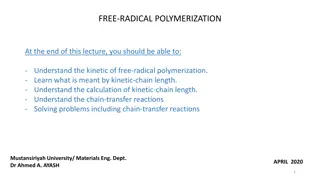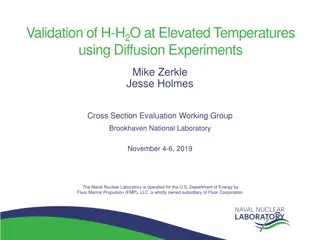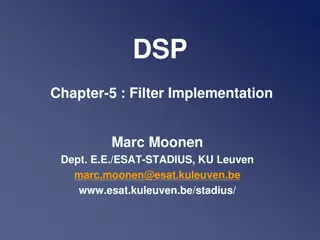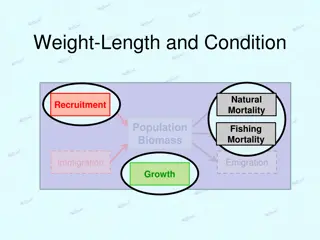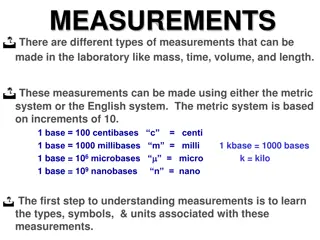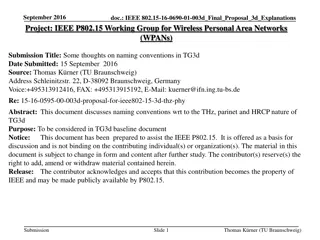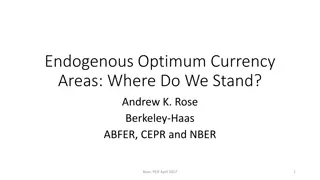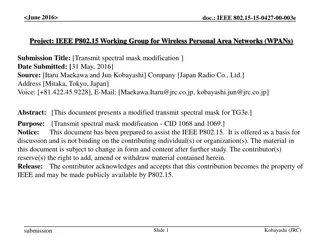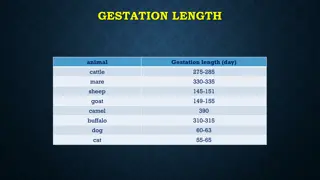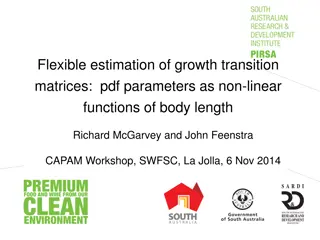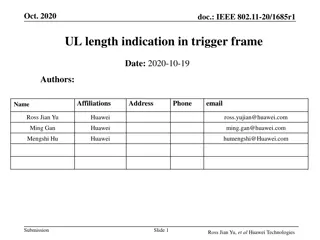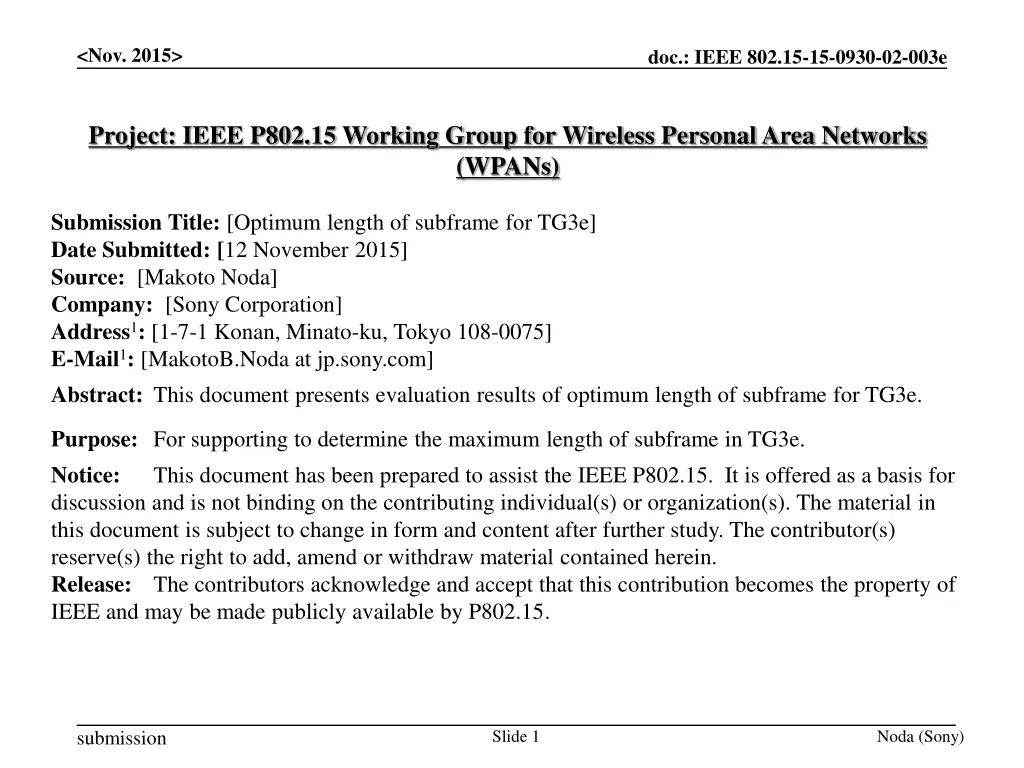
Optimum Length of Subframe for TG3e Evaluation Results
This document discusses the evaluation results of determining the optimum length of the subframe for TG3e in IEEE 802.15 standard for Wireless Personal Area Networks (WPANs). It explores the impact of subframe length on data throughput, considering factors like subframe-error rate and frame fragmentation. The analysis aims to support the decision-making process regarding the maximum subframe length in TG3e.
Download Presentation

Please find below an Image/Link to download the presentation.
The content on the website is provided AS IS for your information and personal use only. It may not be sold, licensed, or shared on other websites without obtaining consent from the author. If you encounter any issues during the download, it is possible that the publisher has removed the file from their server.
You are allowed to download the files provided on this website for personal or commercial use, subject to the condition that they are used lawfully. All files are the property of their respective owners.
The content on the website is provided AS IS for your information and personal use only. It may not be sold, licensed, or shared on other websites without obtaining consent from the author.
E N D
Presentation Transcript
<Nov. 2015> doc.: IEEE 802.15-15-0930-02-003e Project: IEEE P802.15 Working Group for Wireless Personal Area Networks (WPANs) Submission Title: [Optimum length of subframe for TG3e] Date Submitted: [12 November 2015] Source: [Makoto Noda] Company: [Sony Corporation] Address1: [1-7-1 Konan, Minato-ku, Tokyo 108-0075] E-Mail1: [MakotoB.Noda at jp.sony.com] Abstract: This document presents evaluation results of optimum length of subframe for TG3e. Purpose: For supporting to determine the maximum length of subframe in TG3e. Notice: This document has been prepared to assist the IEEE P802.15. It is offered as a basis for discussion and is not binding on the contributing individual(s) or organization(s). The material in this document is subject to change in form and content after further study. The contributor(s) reserve(s) the right to add, amend or withdraw material contained herein. Release: The contributors acknowledge and accept that this contribution becomes the property of IEEE and may be made publicly available by P802.15. Slide 1 Noda (Sony) submission
<Nov. 2015> doc.: IEEE 802.15-15-0930-02-003e Introduction In TG3e proposal, the maximum length of subframe in MAC layer is T.B.D., see 15-0663/r02. For supporting to determine the maximum length of subframe in TG3e, this document provides the optimum length of subframe calculated by using the TG3e-frame format. For obtaining the optimum length, an effect of subframe-error rate has been incorporated into a calculation of a data throughput in this work. Slide 2 Noda (Sony) submission
<Nov. 2015> doc.: IEEE 802.15-15-0930-02-003e Fragmentation and aggregation This work evaluates the optimum Ls in a frame fragmentation vi: i-th subframe overhead consisting of FCS and the subframe header an MSDU Ls length of a fragmented MSDU fragmented MSDU fragmented MSDU fragmented MSDU fragmented MSDU v1 v2 v3 vm subframe #2 subframe #3 subframe #m subframe #1 A MAC-SAP data unit (MSDU) is divided and allocated into m subframes. (a) Frame fragmentation 1st 2nd 3rd m-th MSDU v1 v2 v3 vm MSDU MSDU MSDU subframe #2 subframe #3 subframe #m subframe #1 Each subframe includes an MSDU. (b) Frame aggregation Slide 3 Noda (Sony) submission
<Nov. 2015> doc.: IEEE 802.15-15-0930-02-003e Definition of Data_Throughput data frame 4 T_SIFS 2.5 s preamble (short) PHY Header MAC Header HCS payload payload overhead preamble (short) preamble (short) PHY Header MAC Header HCS 1 2 3 4 T_PAS 416B 1.891 s T_BHD 16B 0.691 s T_PLD T_SIFS 2.5 s ACK frame (2.582 s) Data frames and ACK frame Data_Throughput is defined as a data throughput transferred from the MAC to the PHY across the PHY-SAP as following: B_PLD Data_Throughput = T_PLD + 2*(T_PAS + T_BHD + T_SIFS) T_PLD = m(Ls + B_FCS + B_SHD)/r = (Ls + 64)m/r : a frame efficiency depending on a data-error rate and an ACK scheme employed r: a PHY-SAP payload-bit rate between 2258.7 and 13141 Mb/s m: number of subframes, B_FCS: bit length of FCS, B_SHD: bit length of subframe header Slide 4 Noda (Sony) submission
<Nov. 2015> Analysis of efficiency for Stack ACK doc.: IEEE 802.15-15-0930-02-003e subframe #1 subframe #2 subframe #i subframe #i+1 subframe #i+2 subframe #m 1 subframe #m m i subframes regarded as errors for Stk-Ack Figure of (i+1)-th subframe error occurred in a frame consisting of m subframes In TG3e proposal, Stack ACK (Stk-ACK) is employed as the ACK scheme. A probability that i-consecutive (0<i m 1) subframes with a subframe-error probability of ps are correct and that (i+1)-th subframe is incorrect is (1 ps)i ps. Therefore, a frame efficiency for Stk-Ack, stk, which is a ratio of an expected number of correct subframes to all subframes in a frame, is: ? 1 ???=1 ? (1 ??)???+ ?(1 ??)? ? ?=1 Here we assumed: ?} =(1 ??){1 1 ?? ??= 1 1 bER(??+64) bER: bit-error rate ? ?? Slide 5 Noda (Sony) submission
<Nov. 2015> doc.: IEEE 802.15-15-0930-02-003e MCS table for SC-PHY in TG3e proposal Data-rate loss defined as DATA_Throughput/ri 1 has been evaluated PHY-SAP payload-bit rate, ri (Gb/s) bit-rate ratio, ri/ri+1 Index of MCS identifier, i single-carrier modulation FEC Rate w/o PW w/ PW 0 /2 QPSK 11/15 2.5813 2.2587 0.7857 1 /2 QPSK 14/15 3.2853 2.8747 0.6364 2 16QAM 11/15 5.1627 4.5173 0.7857 3 16QAM 14/15 6.5707 5.7493 0.8485 4 64QAM 11/15 7.7440 6.7760 0.7857 5 64QAM 14/15 9.8560 8.6240 0.7500 6 256QAM 14/15 13.1413 11.4987 - Slide 6 Noda (Sony) submission
<Nov. 2015> doc.: IEEE 802.15-15-0930-02-003e Evaluation to obtain the optimum subframe length (1) no fragmentation 0 -5 -10 Data-rate Loss (%) -15 -20 optimum -25 the maximum length in the latest draft -30 -35 bER = 1e-7 PHY-SAP payload-bit rate: 13.14 Gb/s (MCS6-256QAM without pilot word) an MSDU length = 219 = 524,288 Octets -40 bER = 1e-8 -45 bER = 1e-10 -50 Length of a Fragmented MSDU, Ls (Octets) Length of a fragmented MSDU dependence of data-rate loss Slide 7 Noda (Sony) submission
<Nov. 2015> doc.: IEEE 802.15-15-0930-02-003e Evaluation to obtain the optimum subframe length (2) no fragmentation 0 -5 -10 Data-rate Loss (%) -15 optimum -20 -25 the maximum length in the latest draft -30 -35 PHY-SAP payload-bit rate: 6.57 Gb/s (MCS3-16QAM without pilot word) an MSDU length = 218 = 262,144 Octets bER = 1e-7 -40 bER = 1e-8 -45 bER = 1e-10 -50 Length of a Fragmented MSDU, Ls (Octets) Length of a fragmented MSDU dependence of data-rate loss Slide 8 Noda (Sony) submission
<Nov. 2015> doc.: IEEE 802.15-15-0930-02-003e Discussions and conclusion Decreasing bER, increasing the optimum length of fragmented MSDU to the MSDU length. Thus the maximum length of a fragmented MSDU should be the same as the maximum length of MSDU for maximizing the data throughput. However, a data throuput is almost saturated at a length larger than 8,196 Octets, which is the value in the latest TG3e draft, when bER is sufficiently small. Moreover, the value of 8,196 Octets or around is very close to the optimum lengths in many cases when bER is relatively large. Therefore, a maximum length of fragmented MSDU of 8,196 Octets or around would be reasonable if one want to restrict the maximum length for some other reasons. Slide 9 Noda (Sony) submission
<Nov. 2015> doc.: IEEE 802.15-15-0930-02-003e END Slide 10 Noda (Sony) submission




